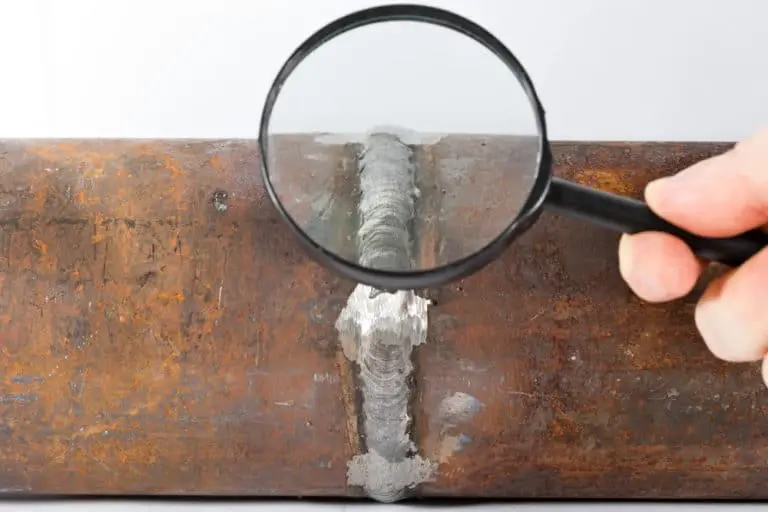Visual inspection is a crucial nondestructive testing process in industrial settings, helping ensure safety, quality, and efficiency. In this guide, you’ll discover effective tips to make your visual inspection processes more successful and efficient.
1. Understanding NDT
The foundation of effective visual inspection starts with understanding its purpose and methodology. Learn how it fits into your operations and goals.
Visual inspection is a nondestructive testing technique for detecting defects using the naked eye to ensure equipment is working properly. This hands-on approach helps spot potential issues early on, preventing bigger problems Mastering Visual Inspection for Quality Assurance. As we delve into the topic, we explore the techniques and methods that make visual inspection an essential practice for maintaining the reliability of industrial assets.
2. Selecting the Right Tools
Choosing suitable tools for visual inspection is crucial. Discover which tools best suit your needs for improved accuracy and efficiency.
A successful inspection starts with selecting the appropriate tools and equipment tailored to your specific industrial needs. Consider evaluating your current processes and identifying where technology could enhance detection capabilities. For instance, using innovative NDT CAPABILITIES can bolster your inspection precision and outcomes.
3. Training Your Team
A well-trained team is indispensable. Explore effective training techniques to boost your team’s proficiency in conducting accurate inspections.
Investing in training your team ensures that every individual conducting inspections is well-versed with the latest techniques, thereby enhancing the overall inspection quality. Regular workshops and certification courses, like those offered by professional organizations, can significantly improve your team’s expertise.
4. Creating a Checklist
An organized nondestructive testing checklist can streamline the inspection process. Find out how to create comprehensive checklists tailored to your specific needs.
Utilizing a detailed checklist ensures that every aspect of a visual inspection is covered systematically Visual Inspection Checklist. Clearly defined criteria and incorporating photographic evidence during inspections can boost accountability and transparency.
5. Setting Clear Standards
Defining clear inspection standards helps maintain consistency. Learn how to establish standards that ensure reliability and accountability.
Setting and maintaining clear standards are vital for ensuring consistency in your inspection processes. By developing precise defect criteria, inspectors can effectively recognize and manage deviations. This ensures that your industrial operations consistently meet quality and safety expectations.
6. Ensuring Proper Lighting for Nondestructive Testing
Proper lighting is essential for effective inspection. Discover tips on optimizing lighting conditions to enhance visibility and detection accuracy.
Optimal lighting directly impacts the effectiveness of visual inspections. Ensure that your inspection environments are evenly lit and glare-free to highlight even the most subtle irregularities. Consider investing in adjustable lighting solutions that can be fine-tuned for varying inspection scenarios.
7. Paying Attention to Details
Detail-oriented inspections lead to better outcomes. Understand the importance of meticulous observation to catch even minor discrepancies.
Attention to detail is what separates a mediocre inspection from an exceptional one. It’s crucial to hone the skill of spotting anomalies that might often be overlooked, as even a small defect can lead to bigger issues in industrial settings.
8. Documenting Findings
Documentation is key to tracking and addressing issues. Learn best practices for recording inspection results for future reference and analysis.
Effective documentation serves as a valuable reference for future inspections. Adopt systematic ways of recording findings to facilitate easy retrieval and analysis. This will support continuous improvement initiatives by providing data-driven insights into recurring issues.
9. Embracing Technology
Technology can enhance inspection processes. Explore various technological advancements that can assist in improving inspection accuracy.
Incorporating technology, such as PAUT Ultrasonics, into your inspection routine can dramatically improve accuracy and efficiency. Embrace advancements in augmented reality or advanced imaging tools to enhance the thoroughness of your nondestructive testing.
10. Implementing Feedback Loops
Feedback loops help improve inspection processes. Discover methods to implement effective feedback systems that drive continuous improvement.
Creating a culture of open communication and continuous feedback is vital for process improvement. Set up systems where inspectors can provide insights and suggestions post-inspection, hence fostering an environment that values and encourages continuous enhancement.
11. Handling Common NDT Challenges
Learn how to tackle common visual inspection challenges with practical solutions and tips ensuring smooth operations.
Challenges such as human error and environmental factors can affect visual inspection outcomes. Address these by standardizing procedures, offering regular training, and setting up optimal inspection conditions. Leveraging Baron NDT’s expertise can also provide solutions to these common challenges.
12. Continual Skill Development
Ongoing skill development is vital for inspection success. Find out how continual learning and training programs can contribute to long-term improvements.
The rapidly evolving industrial landscape demands constant updates in skills and knowledge. Encourage your teams to engage in ongoing training and certification programs to ensure they stay abreast of the latest industry standards and practices. This not only enhances inspection quality but also empowers your workforce with the confidence to tackle complex inspection tasks.

